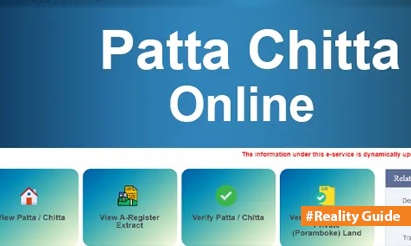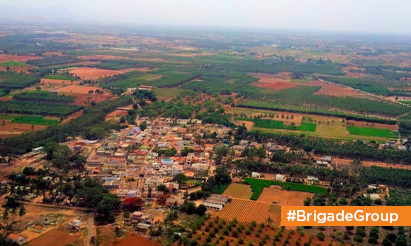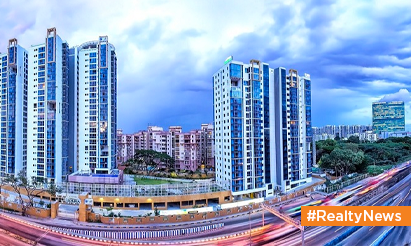Everything you need to know about Karnataka land conversion.
According to the legislation, agricultural land cannot be utilised for residential or commercial uses unless it is transformed into non-agricultural land. When transformed, the owner can utilize it for whatever reason he or she chooses. Nevertheless, land conversion is a legal procedure that necessitates the submission of several paperwork as well as the appropriate authorization from responsible parties. The procedure of land conversion is governed by the state and differs depending on the region. In Karnataka, the land is converted from agricultural to non-agricultural plots as follows:
Filing of an Application
The first step is to obtain consent from the land revenue department’s Collector, Sub Divisional Officer, or Tehsildar. “Applicants have the option of applying offline or online.” The Karnataka government has created an online method to streamline the inspection and sanctioning process to assist landowners and accelerate the customs clearance,” says N Somashekar, Property Agent, GK Properties, Bangalore.
Send an application in the required format, together with the accompanying facts and documentation, to begin the process:
- Certified copy of land documents include the Certificate of Ownership
- Land map reproductions that have been certified (Tehsil and Taluk office
- Land specifics such as size, soil type, and crops grown on the property
- Copies of any land mortgages if any
- Copies of an architect’s layout, site plan, and building plan
- Appointment letter from the Architect and Architect Department (AOA)
- NOCs from Gram Panchayats, Municipal Corporations, the Highway Authority, and the Pollution Control Board (if planning to set up an industrial unit)
- Patwari/Talati certified copy
- Copy of the Urban Development Authority’s zonal certificate
- Certificate of Right and Tenancy (RTC)
- Letter of mutation
- Original Sale Contract
- Recent tax receipts
- Survey map with certification
If the application is for an online process, it should also include a survey number and an affidavit. If the owner desires to substantially transform the property or if the RTC has numerous owners, the applicant must also submit the 11E drawing.
Examining the application and performing verifications
When the inquiry is received, the relevant authorities will scan the information to confirm ownership, encumbrances, and land acreage. Following the completion of the inspection, a circular office visits the site to determine that it is vacant land with no existing structures or high-tension lines. The Land Acquisition Department and PCB authorities do the appropriate checks as well.
The application will be sent to the Urban Development Authority for assessment during the online evaluation process. The authorities must determine whether or not the proposal is in accordance with the master plan.
Comprehensive Development Plan (CDP)
A Comprehensive Development Plan (CDP), sometimes known as a Master Plan, is a map of the state’s major geographic areas. If the land is inside the Municipal boundaries, a representative from the Planning and Development Authority analyses the Master Plan to confirm that it is in accordance with Development Control Regulations and building bye-laws.
The Award
If the landowner/applicant meets all of the requirements, the authority permits the Change of Land Use (CLU). Inside one year after the order date, the applicant can begin non-agricultural use of land, beginning with flattening the ground and delineation. The whole procedure is followed by a CLU charge.
Once all of the facts have been checked and validated, the applicant must pay the CLU costs online. When finalized, the designated deputy commissioner will digitally sign the translation decision. When the application is received, the applicant can download and print a copy for subsequent reference.
There is no room for deviation in land usage.
The purpose of land cannot be changed after the conversion is complete. For example, land that has been converted for residential use cannot be utilised for industrial reasons, and vice versa.
Consequences of non-compliance
The construction on the property is eligible for destruction if the purpose is not met. Somashekar also claims that the owner would face sanctions. As a landowner, you have the right to utilise your land however you see fit, as long as all legal criteria are met. Legal conversion is required to prevent complications and fines. In addition, after the property has been transformed, notify the Tehsildar of the Change of Land Use within 30 days for proper record keeping.
Disclaimer: The views expressed above are for informational purposes only based on industry reports and related news stories. PropertyPistol does not guarantee the accuracy, completeness, or reliability of the information and shall not be held responsible for any action taken based on the published information.





I am having indistrial N A layout dated 1980s at taluka of karnataka ,out of which 4 plots have sold out in 1986..now in 2000 I received one letter from town planning authority stating to convert that land to residential purpose as surrounded land is residential. Now I want to convert that layout to residential and commercial NA layout.plz guide me the procedure..it’s at belgaum district.4 plots I sold there is activity of vehicle repairy.